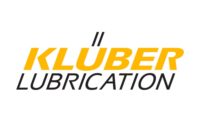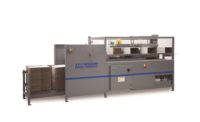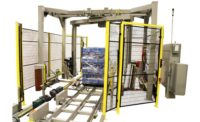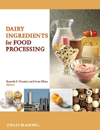Company: Gerhard Schubert GmbH
Website: www.gerhard-schubert.com/en
Equipment Snapshot: Schubert has developed a new high-performance erector for the fully automated erection and filling of folding RSC cartons. This new technology is ideally suited for products such as shampoos which need to be filled and packaged with a high output. When changing formats, the carton magazine and the robot tools automatically adjust—offering manufacturers a high degree of flexibility in format selection.
The compact TLM machine packs for instance cosmetics such as shampoo bottles in RSC cartons, which are erected and filled in several lanes. The bottles can be fed in groups and packed in shrink-wrap film. Alternatively, individual bottles can also be packaged. The new solution’s highlights include the magazine, which can be flexibly adjusted via a positioning drive, and the erection tools, which can be adapted to different formats. This means that the tools can be used for all format sizes. Format conversions can be selected easily and quickly via the VMS packaging machine control system.
The carton magazine is able to handle an extensive selection of carton sizes – ranging from 120 x 100 x 100 mm to 900 x 430 x 400 mm – and automatically converts between one-, two-or three-lane versions.
The A2 robot used has a tool with a total of 12 spreading elements, which can be adjusted automatically by means of an NC drive. Four of these elements are inserted from above into the previously opened carton, further expanding it by positioning the centering elements into the carton corners. Via a toothed belt drive, the entire assembly moves with the cartons to the next station. The robots’ spreading tools are equipped with intelligent sensors, which enable automatic compensation for carton tolerances. A further intelligent feature of the robotic tools is the DC servo drive, which regulates the clamping force during erection. The spreading movement takes place in both longitudinal and transverse directions. For this innovative development, and true to Schubert’s philosophy of reducing mechanics while increasing the machines’ intelligence, the number of format parts was further reduced.
The erected cartons are then placed on the vacuum conveyor by an F2 robot and transported to the next station. This is where the pre-grouped bottle packs are placed into cartons – also using an F2 robot.
After the loading process, the filled cartons are passed through the closing unit, which glues the cover flaps with hot glue before closing them. The closing unit’s positions are freely programmable through the NC drive. At the end of the packaging process, the filled and closed cartons are delivered to the downstream process narrow edge leading on a single lane outfeed conveyor.
If bottles are to be packaged individually instead of in product groupings, the bottle feed is carried out in plastic carriers (pucks) on a single lane. In this case, the upstream machine is a labeler that provides the products with the desired codes and product information.









